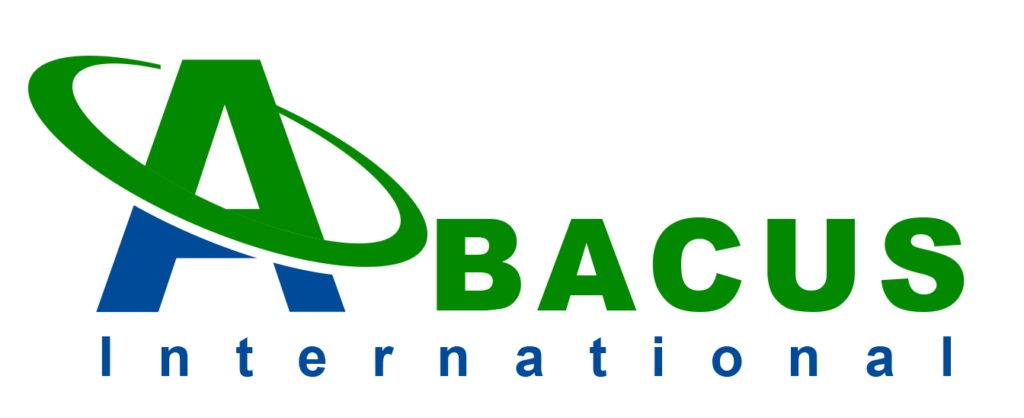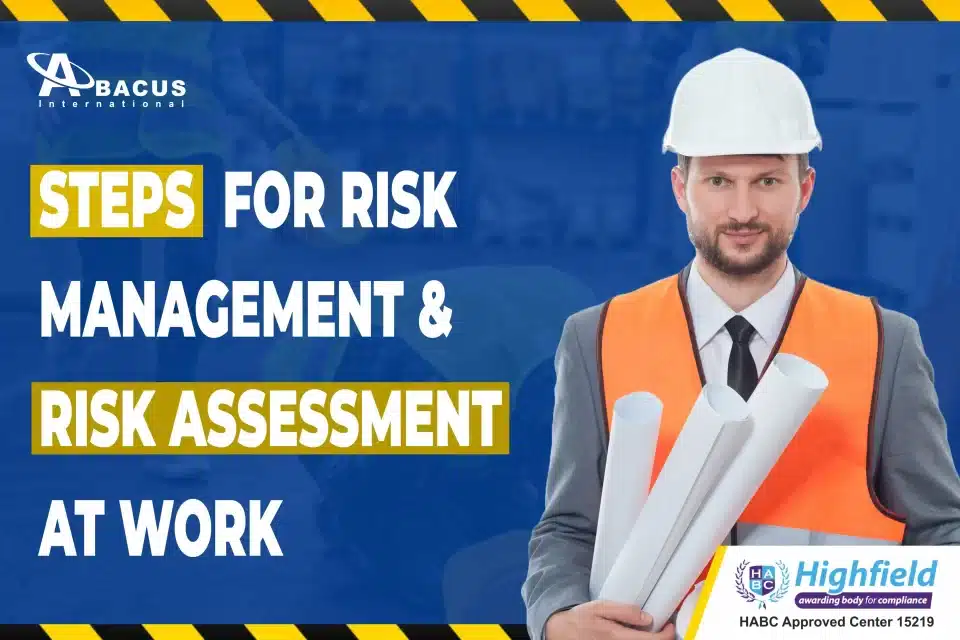Risk assessment at work involves the systematic identification, evaluation, and management of potential hazards and risks that may arise in the workplace. It is a crucial process for ensuring the health, safety, and well-being of employees, visitors, and any other individuals present in the work environment.
Steps Needed to Manage Risk at workplace:
Here are the general steps involved in managing risk:
1. Identify Hazards
The first step in a workplace risk assessment is to identify potential hazards. This includes recognizing any conditions, substances, activities, or equipment that could cause harm. When identifying hazards, it’s important to consider potential risks and dangers that could cause harm or damage. Hazards can vary depending on the nature of the business or activity, but here are some common categories to consider:
Physical Hazards:
- Slips, trips, and falls (e.g., uneven surfaces, wet floors, cluttered walkways)
- Falling objects or collapsing structures
- Machinery or equipment hazards (e.g., moving parts, pinch points)
- Electrical hazards (e.g., exposed wiring, faulty equipment)
- Fire hazards (e.g., flammable materials, inadequate fire safety measures)
- Noise hazards (e.g., loud machinery or equipment)
Chemical Hazards:
- Toxic substances (e.g., chemicals, solvents, cleaning agents)
- Flammable or combustible materials
- Corrosive substances (e.g., acids, alkalis)
- Hazardous fumes, vapors, or gases
Biological Hazards:
- Infectious diseases (e.g., viruses, bacteria)
- Exposure to bodily fluids or biohazardous materials
- Contaminated food or water sources
Ergonomic Hazards:
- Poor ergonomics in workstations (e.g., uncomfortable seating, improper desk height)
- Repetitive motions or overexertion
- Awkward or unsafe postures
- Inadequate lighting or ventilation
Psychosocial Hazards:
- Work-related stress or excessive workload
- Bullying or harassment in the workplace
- Lack of support or communication
- Poor work-life balance
Environmental Hazards:
- Extreme temperatures (e.g., heat stress, cold exposure)
- Natural disasters (e.g., earthquakes, floods)
- Air or water pollution
- Hazardous waste or emissions
Other Hazards:
- Security risks (e.g., theft, violence)
- Working at heights
- Confined spaces
- Radiation hazards
2. Determine Who Might Be Harmed
Identify the individuals who may be at risk from the identified hazards. This includes employees, contractors, visitors, and any other relevant parties. Consider different groups of people, such as workers with specific vulnerabilities (e.g., pregnant employees or individuals with disabilities), and ensure their unique needs are taken into account.
3. Assess Risks
Evaluate the risks associated with each identified hazard. Assess the likelihood of the risk occurring and the potential severity of the harm that could result. This can be done through a qualitative or quantitative risk assessment approach. Consider existing control measures in place and their effectiveness in reducing the risks. In this assessment, you should:
- Determine Who Might Be Harmed and How: Identify the individuals or groups who could potentially be affected by the hazards and the potential consequences. Consider employees, customers, visitors, contractors, or any other relevant parties.
- Evaluate Existing Control Measures: Review the control measures that are already in place to mitigate the identified risks. Assess their effectiveness in reducing or eliminating the hazards. Identify any gaps or areas where additional measures are needed.
- Determine Further Action: Determine what additional actions are required to further control the risks. This may involve implementing new control measures, modifying existing ones, or introducing additional safety protocols. Aim to minimize the likelihood and severity of harm.
- Assign Responsibility: Identify the individuals or teams responsible for implementing the required actions. Clearly communicate their roles and responsibilities in carrying out the necessary risk control measures. Ensure that they have the knowledge, resources, and authority to fulfill their responsibilities effectively.
- Establish Timelines: Set specific deadlines or timeframes for implementing the necessary actions. Consider the urgency of the risks and prioritize accordingly. This helps ensure that risk control measures are implemented in a timely manner.
Also Read: Importance of Safety Training At Workplace
4. Control Measures
Implement control measures to eliminate or minimize the identified risks. Control measures can be categorized into different levels of hierarchy, including elimination (removing the hazard entirely), substitution (replacing the hazard with a safer alternative), engineering controls (modifying the work environment or equipment), administrative controls (implementing procedures and policies), and personal protective equipment (providing appropriate protective gear).
5. Record Findings and Review
If you employ 5 or more people you must document the findings of the risk assessment including:
- Identified hazards
- Assessed risks
- Implemented control measures
Keep records of the risk assessment for future reference and review. Regularly review the risk assessment to ensure its effectiveness and make adjustments as necessary.
Click To Get: Risk Assessment Template
6. Regular Review and Updates
Continuously monitor and review the effectiveness of control measures and risk management strategies. Stay informed about any changes in legislation or industry best practices related to workplace safety and incorporate them into your risk assessment process. Regularly update the risk assessment to account for changes in the work environment, tasks, or any new hazards that may arise.
- they may no longer be effective
- Changes in the Workplace: Any changes in the workplace can introduce new risks. Review the risk assessment when there are changes to staff, processes, substances, or equipment used.
Also Read: Importance of Safety in Construction Industry
Common Workplace Risks:
Common workplace risks can vary depending on the industry and specific work environment. However, here are some examples of common workplace risks that are often encountered across various sectors:
- Slips, Trips, and fall: Slippery surfaces, uneven floors, cluttered walkways, inadequate lighting, and improper use of ladders or stairs can lead to slips, trips, and falls.
- Ergonomic Hazards: Poor workstation setup, repetitive motions, lifting heavy objects, and awkward postures can result in musculoskeletal disorders, such as back pain, strains, and sprains.
- Hazardous Substances: Exposure to chemicals, solvents, gases, fumes, or other hazardous substances can lead to respiratory problems, skin irritation, allergies, or long-term health effects.
- Manual Handling: Improper lifting, carrying, pushing, or pulling of heavy objects without proper techniques or equipment can cause strains, sprains, and other musculoskeletal injuries.
- Fire and Electrical Hazards: Inadequate electrical wiring, overloaded sockets, faulty equipment, and improper storage or handling of flammable materials can increase the risk of fires and electrical accidents.
- Work-related Stress: Excessive workload, long working hours, lack of control, poor communication, and conflict can contribute to work-related stress, which can lead to physical and mental health issues.
- Workplace Violence: Threats, harassment, bullying, or physical violence from colleagues, customers, or external parties can pose risks to employee safety and well-being.
- Machinery and Equipment Hazards: Insufficient training, lack of maintenance, and unsafe operation of machinery and equipment can result in accidents, amputations, or other serious injuries.
- Working at Heights: Working at heights without proper fall protection measures or inadequate safety equipment can lead to severe injuries or fatalities.
- Noise Hazards: Excessive noise levels in the workplace can cause hearing damage and contribute to stress-related issues.
- Biological Hazards: Healthcare settings or industries dealing with biological agents may face risks associated with infectious diseases, such as exposure to viruses, bacteria, or other pathogens.
Also Read: On-Site Safety Precautions
Conclusion:
By conducting thorough and regular risk assessments, organizations can identify and address potential workplace hazards, reduce the occurrence of accidents and injuries, and create a safe and healthy work environment for all employees. Contact us to find how Abacus International Training & Consultancy can help to eliminate all the hazards and make your workplace safer.

